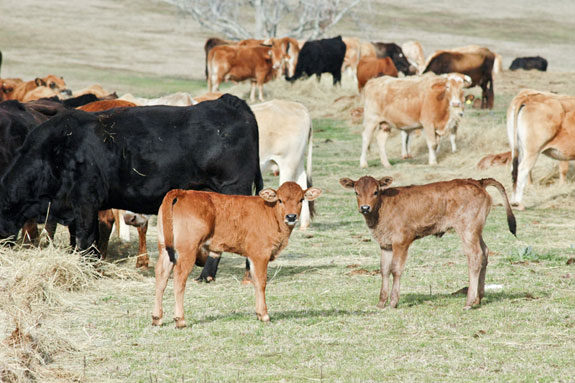“Many forage-livestock producers are hopeful that the coming year will be significantly better than 2011; however, while rainfall will dramatically improve winter pastures and early spring forage production, the degree of recovery of many summer pastures remains unknown,” said Daren Redfearn, Oklahoma State University Cooperative Extension forage and pasture management specialist.
There is no easy answer as to how long it will take drought-damaged summer pastures to recover, in part because lingering drought effects will not disappear immediately with the onset of recent, more typical precipitation patterns.
“Since long-term drought recovery is not common, there is no good rule-of-thumb to follow,” Redfearn said. “It could take several years for many pastures to fully recover. This is especially true if drought conditions continue, as some weather experts have predicted.”
Past grazing and management practices will determine the extent of damage that has occurred from the drought. The dry period that began during the summer of 2010 extended into the fall months and continued through the winter, spring and summer months of 2011.
“Most pastures have been used heavily for two consecutive summers,” Redfearn said. “Some pastures were harvested for hay later than normal or grazed later than normal with little or no opportunity for fall regrowth. An additional complication is that some pastures were not well fertilized, if at all, because of the drought.”
Given the uncertainty relative to summer pasture resources, Redfearn recommends producers develop a strategy to speed pasture recovery and take advantage of the grass growth that occurs.
“Sustaining the forage base is a vitally important strategy when it comes to drought management,” he said.
The good news is that in nearly all situations, warm-season and cool-season forages are perennial grasses which have growth mechanisms that allow for continued growth, even under less than ideal conditions.
A key element is to avoid the temptation to begin grazing as soon as plants start their spring growth. Overgrazing coupled with severe removal of top growth develops plants with shallow root systems. The plants need an opportunity to replenish their energy reserves and establish new root growth.
“Ideally, spring and summer grazing on pastures that were grazed heavily should not begin until the plants have four weeks to five weeks of growth,” Redfearn said.
Grass growth and production dramatically decreases during a drought, with shallow-rooted plants affected sooner and to a greater degree than more deeply rooted plants. A highly vigorous, deep-rooted plant will be less dependent on frequent precipitation than a shallow-rooted plant.
“Even though it can be tempting to begin grazing as soon as pastures start to grow following a drought, grazing drought-ravaged pastures too soon can further weaken the plants, which potentially can further damage the stand,” Redfearn said.
Of course, forage response to any management practice is dependent on moisture. However, moisture alone does not cure the long-term effects on plants from drought.
“Proper management is the best long-term approach to recovery,” Redfearn said. “Most importantly, a modest level of fertilization and possibly some weed control will be required to control competition and allow forage plants a chance to develop.” FG
—Oklahoma State University press release








